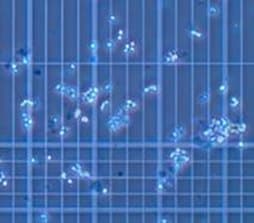Cell Clumping Troubleshooting

Cell clumping: an overview
Cells in suspension may attach to one another and form clumps for a variety of reasons. The most common cause of cell clumping is the presence of free DNA and cell debris in the culture medium, which occurs following cell lysis. The sticky nature of DNA causes cells and other debris to aggregate into large clumps. Below are some causes of cell lysis and DNA release into culture media.
- Overdigestion: excessive treatment with proteolytic enzymes— like trypsin commonly used for cell detachment—can cause cells to clump
- Environmental stress: mechanical force, repeated freeze/thaw cycles and other environmental stresses can accelerate cell death, an early symptom of which may be cell-cell adhesion.
- Tissue disaggregation: preparing a single-cell suspension from primary tissue via chemical, mechanical or enzymatic protocols can lead to some cell rupture. Collagenase is typically needed to digest the extracellular matrix when creating a single-cell suspension from tissue. View dissociation agents here.
- Overgrowth: When cells reach confluency, there is excessive buildup of cell debris and free DNA from cell lysis.

Troubleshooting
Cell clumping reduces access to critical nutrients and, as a result, hinders overall cell growth. Additionally, cell clumps compromise downstream assays that require clean preparation of single cells (e.g., flow cytometry). Depending on the underlying cause of clumping, we suggest solutions for its prevention in the table below.
Related Products |
|---|
계속하려면 로그인하세요.
계속 읽으시려면 로그인하거나 계정을 생성하세요.
계정이 없으십니까?